Discover 11 hidden attractions, cool sights, and unusual things to do in Lincolnton (United States). Don't miss out on these must-see attractions: First Presbyterian Church, St. Luke's Church and Cemetery, and Emanuel United Church of Christ. Also, be sure to include First United Methodist Church in your itinerary.
Below, you can find the list of the most amazing places you should visit in Lincolnton (North Carolina).
Table of Contents
First Presbyterian Church
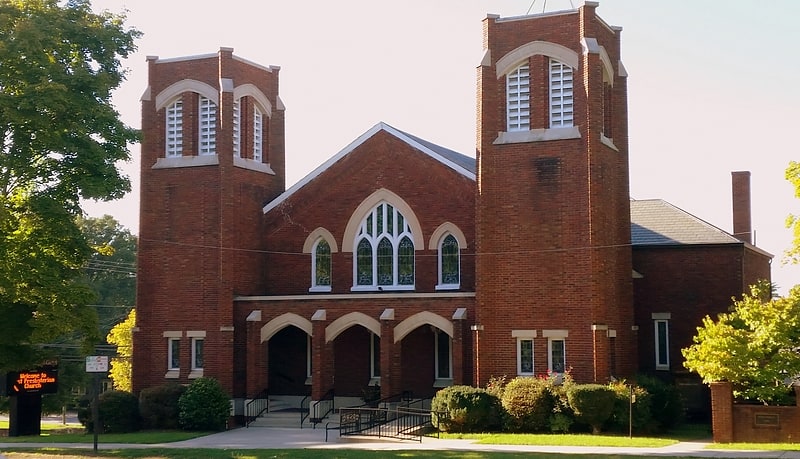
Church building in Lincolnton, North Carolina. First Presbyterian Church is a historic Presbyterian church building located at 114 W. Main Street in Lincolnton, Lincoln County, North Carolina. It was built in 1917, and is a rectangular Late Gothic Revival style brick church with projecting corner towers. It has a front gable slate roof and features shallow, cement-capped buttresses, and lancet-arch windows. The interior is a modified Akron Plan with a theater-style sanctuary and adjoining space for extra seating or Sunday school.
It was listed on the National Register of Historic Places in 1994.[1]
Address: 114 W Main St, 28092-2612 Lincolnton
St. Luke's Church and Cemetery

Episcopal church in Lincolnton, North Carolina. St. Luke's Episcopal Church and Cemetery is a historic Episcopal church complex, cemetery, and national historic district located at 303-321 N. Cedar Street, 322 E. McBee Street in Lincolnton, Lincoln County, North Carolina. The complex includes the church, parish hall, and rectory. The church was built in 1885–1886, and is a Late Gothic Revival style frame structure with a brick veneer added in 1922–1923. The tower is believed to date to 1859. The parish hall was built in 1907, and is a one-story, rectangular frame building. The rectory was built in 1911–1912, and is a two-story, "T"-form Colonial Revival style dwelling with a pebbledash finish. The cemetery includes approximately 300 gravestones, with the earliest dating to 1854.
It was listed on the National Register of Historic Places in 1992.[2]
Emanuel United Church of Christ
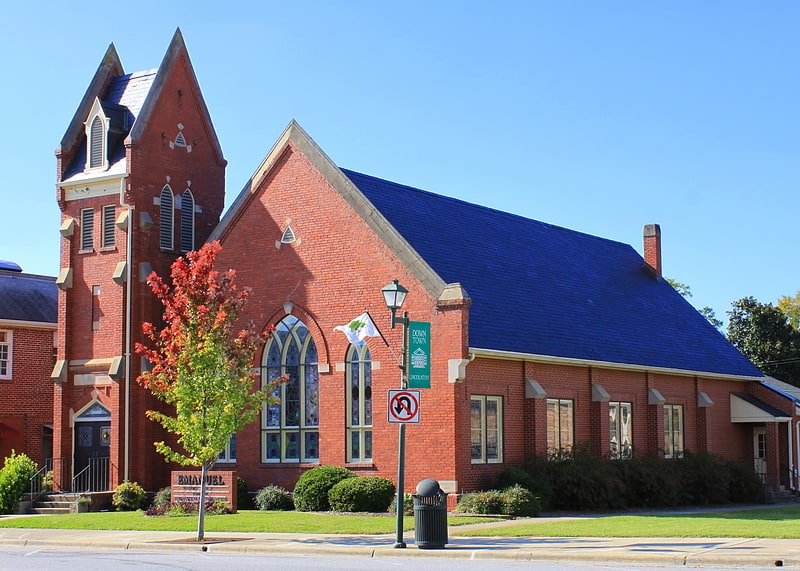
Building in Lincolnton. The Emanuel United Church of Christ, also known as Emanuel Reformed Church, is a historic United Church of Christ church building located at 329 E. Main St. in Lincolnton, Lincoln County, North Carolina. It was designed by Henry E. Bonitz and built in 1913. It is a rectangular Late Gothic Revival style red-orange brick church with a four-stage corner tower. It features cast cement detailing, lancet arched windows, and buttresses with cement caps.
It was listed on the National Register of Historic Places in 1994.[3]
First United Methodist Church
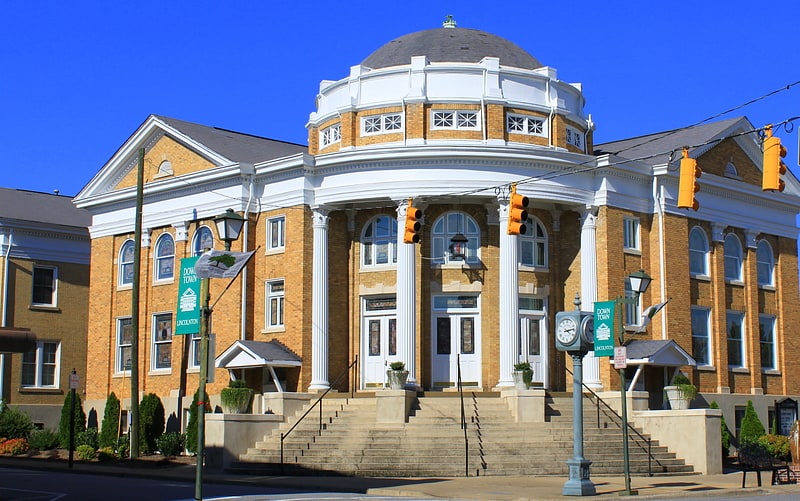
Church building in Lincolnton, North Carolina. First United Methodist Church is a historic United Methodist church building located at 201 E. Main Street in Lincolnton, Lincoln County, North Carolina. It was built in three stages in 1919–1920, 1936, and 1956–1957. The oldest section is a two-story Classical Revival style brick church with a two-story portico and dome-covered sanctuary.
It was listed on the National Register of Historic Places in 1994. It is located in the Lincolnton Commercial Historic District.[4]
Emmanuel Lutheran Church
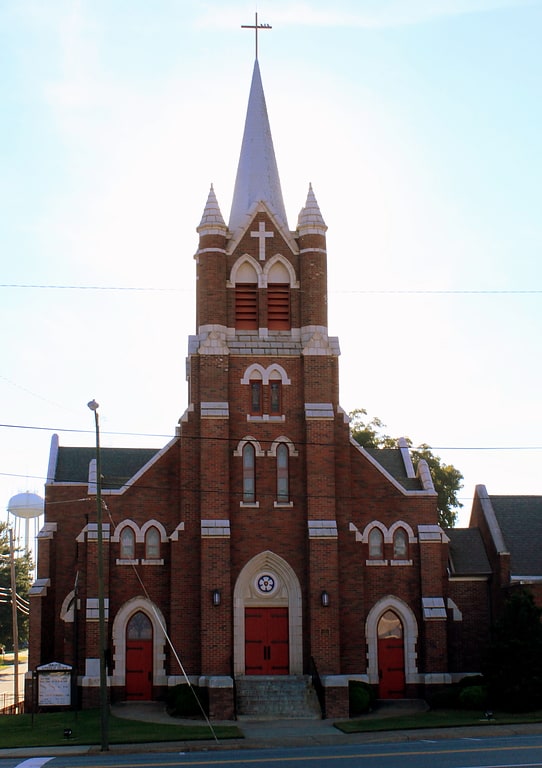
Church building in Lincolnton, North Carolina. Emmanuel Lutheran Church is a historic Lutheran church building located at 216 S. Aspen Street in Lincolnton, Lincoln County, North Carolina. It was built in 1919, and is a rectangular Late Gothic Revival style brick church with a four-stage central tower with a conical steeple. It features pale beige terra cotta, cast stone, granite, and poured cement detailing; lancet arched door and window openings; and stepped buttresses.
It was listed on the National Register of Historic Places in 1994.[5]
Pleasant Retreat Academy
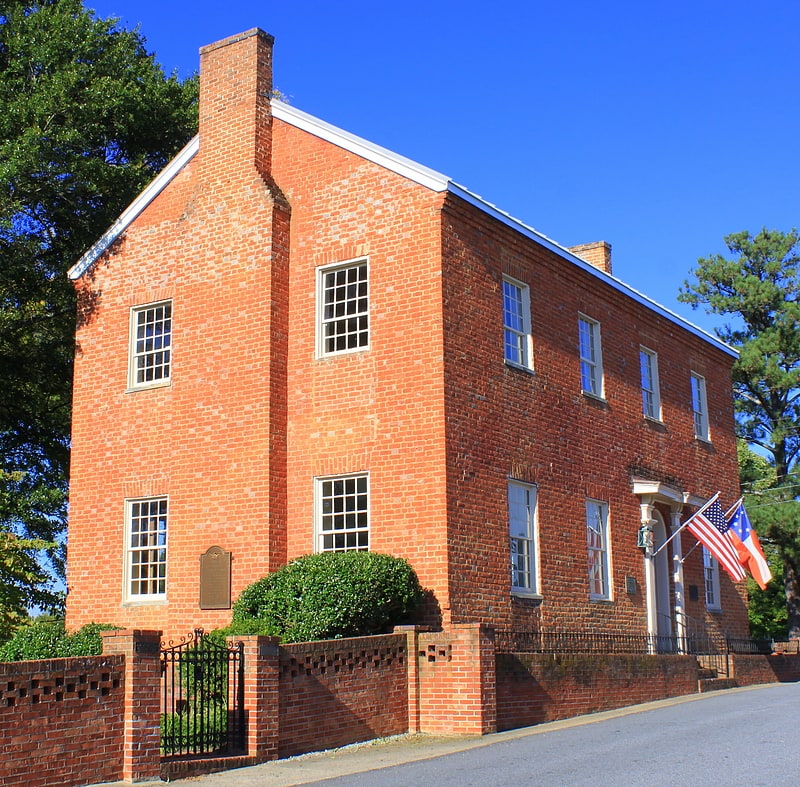
Pleasant Retreat Academy, also known as The Confederate Memorial Hall, is a historic building located at 129 East Pine Street, Lincolnton, North Carolina.[6]
First Baptist Church
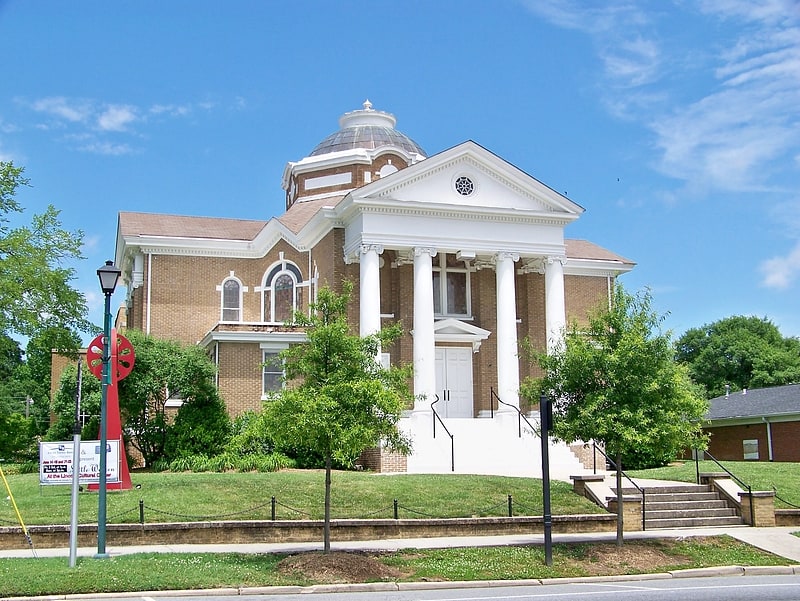
Church in Lincolnton, North Carolina. The Lincoln Cultural Center, also known as the former First Baptist Church of Lincolnton is a historic church location at 403 E. Main Street in Lincolnton, Lincoln County, North Carolina. The building was designed by architect James M. McMichael in a Classical Revival style with a tetrastyle two-story portico and a spherical dome. Its plans were approved in 1919; construction was completed in 1922. The building was acquired by Lincoln County and renovated as the Lincoln Cultural Center and opened for public use in September 1991.
It was added to the National Register of Historic Places in 1994. The First Baptist Church of Lincolnton is currently located at 201 Robin Road, Lincolnton, North Carolina 28092.[7]
Old White Church Cemetery
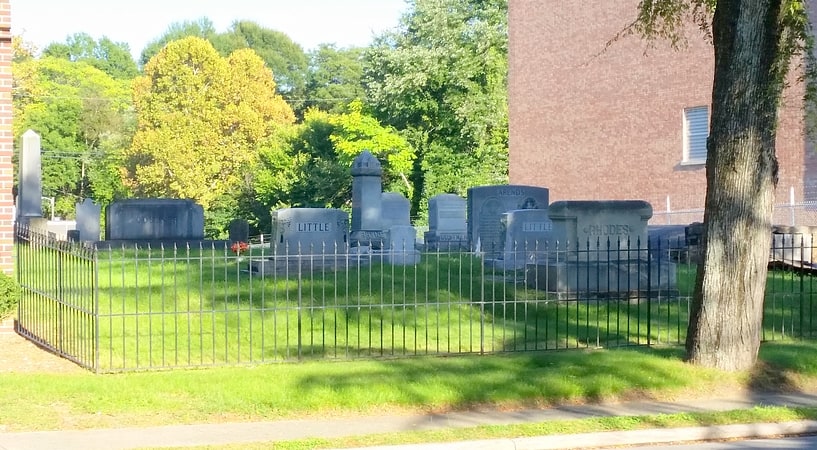
Cemetery in Lincolnton, North Carolina. Old White Church Cemetery, also known as Emanuel Church Cemetery, is a historic cemetery and national historic district located at Lincolnton, Lincoln County, North Carolina. It was established in 1788, and contains the marked graves of some 265 citizens of Lincolnton, with an even larger number of unmarked graves. The oldest marked grave dates to 1801. The gravestones include notable examples of 19th and early-20th century funerary art. It is the oldest burying ground in the town of Lincolnton.
It was listed on the National Register of Historic Places in 1994.[8]
Eureka Manufacturing Company Cotton Mill
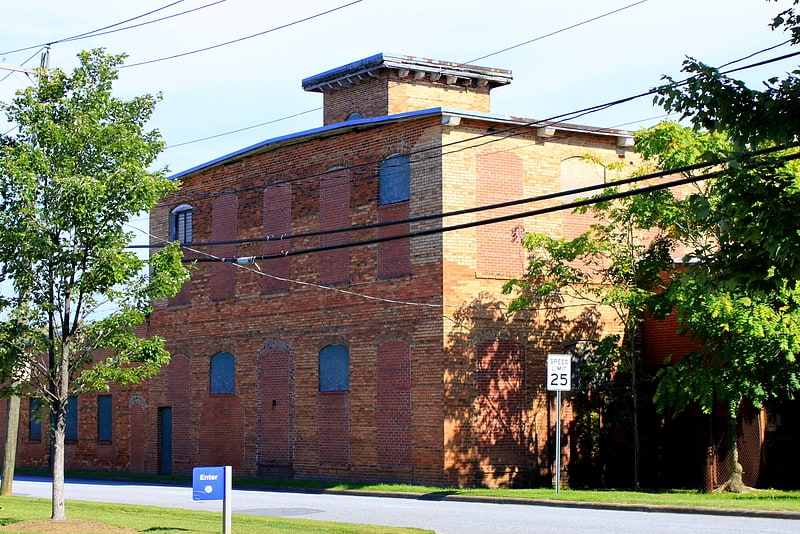
Eureka Manufacturing Company Cotton Mill, also known as Tait Yarn Company and Lincoln Bonded Warehouse Company, is a historic cotton mill located at Lincolnton, Lincoln County, North Carolina. It was built between 1907 and 1910, and is a two-story, brick factory building with a three-story stair tower. Adjacent to the factory is a two-story brick office building built between 1902 and 1906. The buildings housed the Eureka Manufacturing Company from 1906 to 1937, and Tait Yarn Company from 1949 to 1966. Lincoln Bonded Warehouse occupied the buildings into the late-1990s. The buildings are owned by the Lincoln County Historical Association.
It was listed on the National Register of Historic Places in 2013.[9]
Lincoln County Courthouse
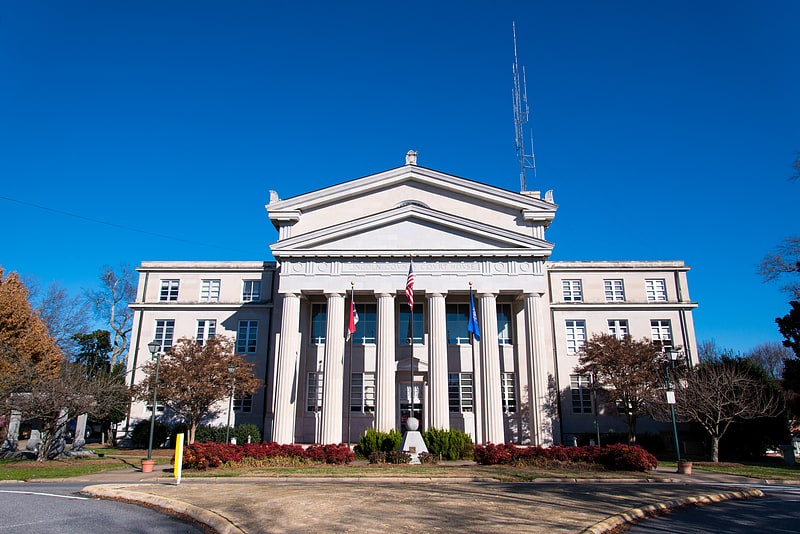
Courthouse in Lincolnton, North Carolina. Lincoln County Courthouse is a historic courthouse building located at Lincolnton, Lincoln County, North Carolina. It was designed by Raleigh architect James A. Salter and built in 1921. It is three-story, ashlar stone, Classical Revival style building. It has a taller central section flanked by flat roofed wings, matching pedimented hexastyle Doric order porticoes on the front and rear of the center section, and a Doric frieze along its sides.
It was listed on the National Register of Historic Places in 1979. It is located in the Lincolnton Commercial Historic District.[10]
Methodist Church Cemetery
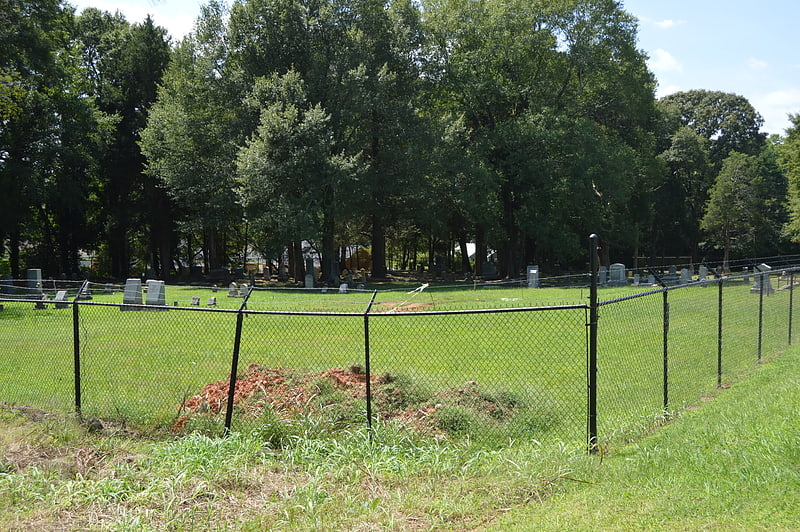
Cemetery in Lincolnton, North Carolina. Methodist Church Cemetery is a historic Methodist cemetery and national historic district located at Lincolnton, Lincoln County, North Carolina. It was established about 1828, and contains the marked graves of some 275 members of the Methodist church, and/or citizens of Lincolnton. The gravestones include notable examples of 19th and early-20th century funerary art. The property was also the site of Lincolnton's Methodist churches and religious worship from about 1822 until 1920.
It was listed on the National Register of Historic Places in 1994.[11]